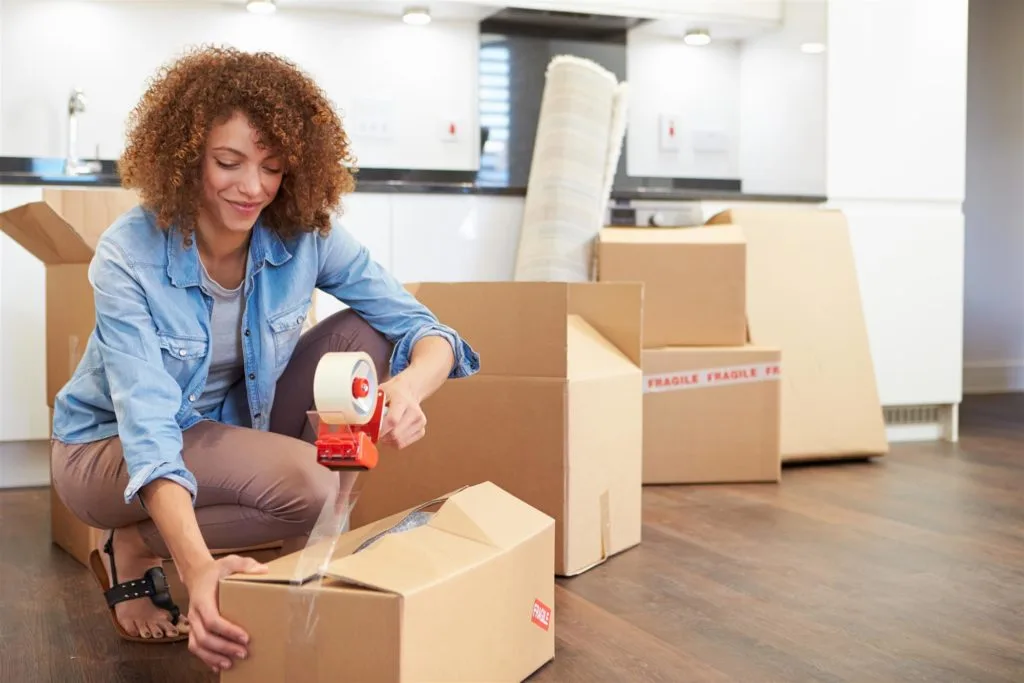One mistake in packing can result in losing your precious, fragile item, such as artwork, musical instruments, Glassware, jewellery, or optical equipment.
This is why you need to pay extra attention to packing your delicate items perfectly when you’re moving so they don’t get damaged on their way to your new destination. In this article, we’ll give you the ultimate guide to packing fragile items for your move.
Expert Guide To Packing Fragile Items for Your Move
Fragile items like pianos, guitars, antiques, precious artworks, Glassware, cameras and their lenses, televisions, and computers should be packed carefully and properly. Ensuring they reach your new house perfectly without getting damaged is important.
Because fragile items are very sensitive, even a soft hit can cause serious damage. This expert guide to packing fragile items for your move is just for you. Just follow all the instructions in it.
1. Use High-Quality Packing Materials:
What packing material you use for your fragile items will determine how they reach their new destination. Your items will be unsafe using freely available packing material like newspapers, wrappers, or low-quality material. Therefore, consider using the following high-quality materials to pack your stuff.
- Bubble wrap
- Packing paper
- Packing peanuts
- Foam sheets
- Cardboard boxes
2. Wrap Items Individually:
Wrapping multiple items together can result in damage, as they may collide on the moving truck. Thus, pack each item individually into separate boxes. Wrap Glassware and ceramics in bubble wrap or packing paper, securing the wrapping with tape.
Wrap them several times for items like vases or figurines and ensure they are well-cushioned. Avoid over-wrapping, as this can create pressure points that might cause damage.
3. Cushion the Bottom and Sides of the Box:
Before placing any items in the box, cushion the bottom with a layer of packing peanuts, bubble wrap, or foam sheets. This creates a protective base and helps absorb shocks. Additionally, line the sides of the box with packing material to protect against impacts from all angles.
4. Pack Items Tightly:
When you’ve wrapped the items, the next step is to place them tightly within the box so they do not move. If they move, they may be damaged by hitting the truck’s walls or other items.
Fill any gaps with packing peanuts, bubble wrap, or crumpled packing paper to prevent movement. Place the items so tightly that they can’t move. Avoid placing them too tightly, as this can also result in damage.
5. Label Boxes Clearly:
Label fragile boxes “FRAGILE” or “HANDLE WITH CARE.” Please ensure the boxes are easily identifiable with bold markers so movers can handle them carefully.
6. Use Proper Techniques for Loading and Unloading:
Don’t put any heavy items on top of the fragile items, as they can easily get damaged. Use moving blankets on them to prevent them from having any starches or impacts.
When you’re unloading them, carefully pick them up, and if they’re heavy, use the moving dollies. Also, have someone align with you who can give you a hand while unloading the items.
7. Consider Professional Packing Services:
Using a professional packing service is much better than doing it yourself because the professional knows the right techniques to handle all fragile items.
They also have the best packing materials. Find out the best movers in Boston who will carefully pack your fragile items and ensure they reach their new place securely.
FAQs
What is the best way to pack fragile items for moving?
Wrap each item individually with bubble wrap or packing paper, and use a sturdy box with cushioning material to fill gaps. Label the box as “fragile” to ensure careful handling.
How do you pack fragile items for travel?
Wrap each item securely in bubble wrap or foam, and use a hard-shell suitcase or padded container for added protection. Please keep them in an easily accessible spot to avoid shifting.
Final Words
When moving, you must properly pack your fragile items like pianos, guitars, glasses, cameras, lenses, etc.
You can do that by using high-quality materials, wrapping items individually, using the right sizes of boxes, cushions in the sides and bottom of the boxes, labelling boxes, placing the items tightly to avoid colliding, using the right loading and unloading techniques, or simply hiring professional packers.
This is the ultimate guide to packing fragile items for your move. Follow it to pack your delicate items securely.
- Lil Tecca Net Worth Revealed: The Financial Success Behind His Music Career - December 20, 2024
- Exploring Joey Merlino’s Net Worth: Insights into the Life of the Infamous Philadelphia Mafia Boss - December 20, 2024
- Unveiling Nathan Fillion’s Net Worth: How the Star of ‘Firefly’ and ‘The Rookie’ Built His $20 Million Fortun - December 17, 2024

